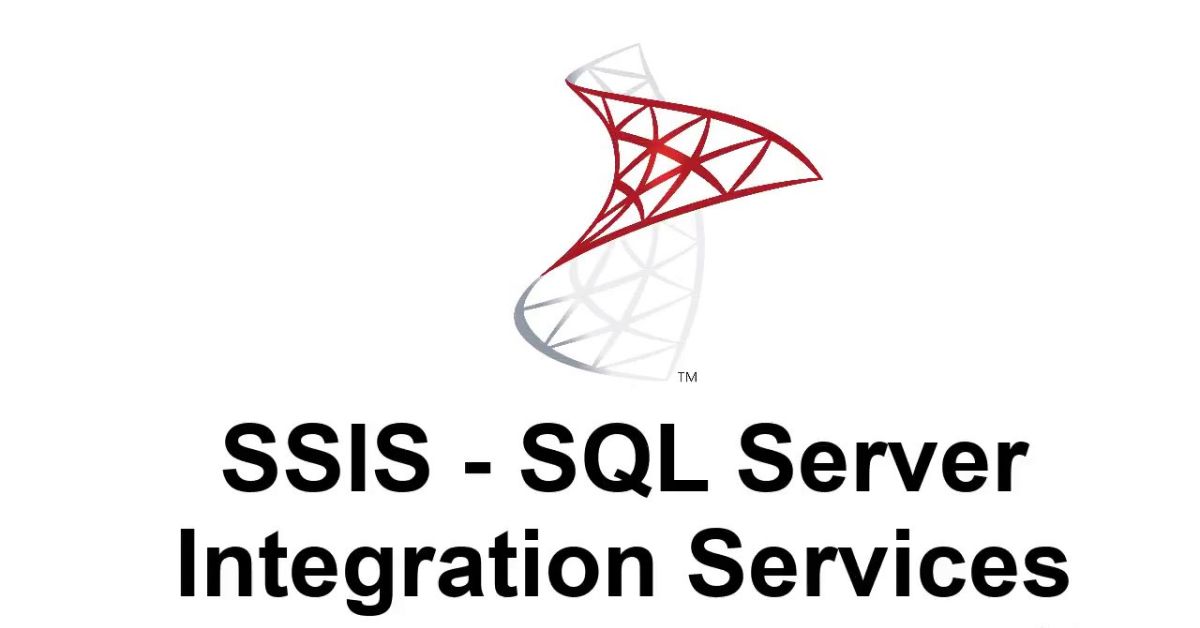In the ever-evolving world of data analysis, the need for efficient and reliable tools has never been more pressing. One such tool, SQL Server Integration Services (SSIS) 816, has emerged as a game-changer, revolutionizing the way businesses handle their data extraction, transformation, and loading processes.
With its powerful features and seamless integration with the Microsoft ecosystem, SSIS 816 has become an indispensable asset for organizations seeking to unlock the full potential of their data.
This article delves into the realm of SSIS 816, exploring its real-world applications, success stories, and the myriad benefits it offers to businesses across various industries. Prepare to be captivated by the transformative power of this remarkable data integration solution as we navigate through its intricate features and witness firsthand how it has empowered organizations to achieve unprecedented levels of data-driven success.
Introduction to SSIS 816 and Its Significance in Data Analysis
Why SSIS 816 Matters
Nowadays in a data-driven world, the ability to effectively manage and extract insights from vast amounts of data is paramount. SSIS 816 plays a crucial role in this endeavor by providing a robust and versatile platform for data integration and transformation. Its significance lies in its ability to streamline complex data processes, enabling organizations to make informed decisions based on accurate and timely information.
Read More : Aoomaal: Navigating the Cosmos of Self-Discovery and Financial Empowerment
Key Benefits
The basic benefits of SSIS 816 is its seamless integration with the Microsoft ecosystem, allowing for a smooth transition and compatibility with other Microsoft products. Additionally, its user-friendly interface and extensive documentation make it accessible to users of varying skill levels, ensuring a gentle learning curve. SSIS 816 also offers scalability, enabling organizations to handle increasingly larger data volumes as their needs grow.
What to Expect
You can expect to gain a comprehensive understanding of SSIS 816’s core features, best practices for configuration and optimization, and real-world success stories that showcase its transformative impact. We will explore the intricacies of data flow tasks, control flow tasks, and data transformation components, equipping you with the knowledge to harness the full potential of this powerful tool.
Understanding the Core Features of SSIS 816
Understanding the Core Features of SSIS 816 is crucial for harnessing its full potential. At its core, SSIS 816 offers a suite of powerful Data Flow Tasks for data integration. These tasks enable extraction, transformation, and loading from diverse data sources.
Data Flow Tasks
At the heart of SSIS 816 lies the Data Flow Task, a robust component that enables the extraction, transformation, and loading of data from various sources. This task encompasses a wide range of data sources, including databases, flat files, Excel spreadsheets, and even cloud-based storage solutions. SSIS 816 provides a visually intuitive interface for designing and managing data flow tasks, ensuring a seamless and efficient data integration process.
Control Flow Tasks
Complementing the Data Flow Tasks are the Control Flow Tasks, which allow for the orchestration and automation of complex data processing workflows. These tasks offer a range of functionalities, including file system operations, database maintenance tasks, and conditional logic execution. With Control Flow Tasks, organizations can streamline their data processes, reducing manual effort and minimizing the risk of errors.
Data Transformation Components
One of the standout features of SSIS 816 is its comprehensive suite of data transformation components. These components enable users to perform a wide range of transformations, from simple data conversions to complex data cleansing and merging operations. Whether you need to handle missing values, apply business rules, or aggregate data from multiple sources, SSIS 816 has the tools to meet your needs.
Also Read This: When is the Best Time to Visit Oxford? Season Tips & What to See
Best Practices for Configuring and Optimizing SSIS 816 for Maximum Efficiency
Configuration Tips
To gain maximum benefits of SSIS 816, it is essential to follow best practices for configuration. This includes leveraging configuration files for easy deployment and maintenance, setting appropriate logging and error handling mechanisms, and implementing robust security measures to protect sensitive data. By adhering to these guidelines, organizations can ensure the smooth and reliable operation of their data integration processes.
Performance Optimization
Efficient data processing is crucial for organizations dealing with large volumes of data. SSIS 816 offers various performance optimization techniques, such as parallelizing data flows, implementing partitioning strategies, and utilizing advanced buffering mechanisms. By implementing these techniques, organizations can significantly reduce processing times and ensure timely delivery of critical business insights.
Parallel Execution
One of the standout features of SSIS 816 is its ability to execute tasks in parallel, leveraging the power of modern multi-core processors. This parallel execution capability allows for faster processing times and improved overall throughput, enabling organizations to stay ahead of the curve in an increasingly data-driven landscape.
Case Studies or Real-World Examples of Successful SSIS 816 Implementations

Case Study 1: Retail Company
A leading retail company faced the challenge of integrating data from multiple sources, including point-of-sale systems, inventory management systems, and customer relationship management platforms. By implementing SSIS 816, the company was able to streamline its data integration processes, enabling real-time visibility into sales performance, inventory levels, and customer preferences. This data-driven approach allowed the company to make informed decisions, optimize inventory management, and deliver personalized shopping experiences to its customers.
Case Study 2: Financial Institution
In the highly regulated financial sector, data integrity and accuracy are paramount. A prominent financial institution leveraged SSIS 816 to integrate data from various sources, including banking systems, credit card transactions, and regulatory reporting platforms.
By implementing robust data transformation and cleansing processes, the institution was able to ensure compliance with regulatory requirements while enhancing its risk management capabilities and improving customer service through data-driven insights.
Case Study 3: Healthcare Provider

A leading healthcare provider faced the challenge of consolidating patient data from multiple electronic health record (EHR) systems and external sources. By implementing SSIS 816, the provider was able to seamlessly integrate data from disparate sources, enabling a comprehensive view of patient medical histories.
This facilitated improved clinical decision-making, enhanced patient care, and streamlined administrative processes, ultimately contributing to better patient outcomes and increased operational efficiency.
Looking Ahead: Future Trends and Updates in SSIS 816

The world of data integration is constantly evolving, and SSIS 816 is poised to adapt to emerging trends and technologies. As cloud computing continues to gain traction, SSIS 816 is expected to offer enhanced support for cloud-based data sources and integration with cloud-based platforms.
Real-Time Data Processing
Furthermore, as the demand for real-time data processing grows, SSIS 816 is likely to incorporate streaming data capabilities, allowing for the seamless integration and processing of data in motion. These future developments will further solidify SSIS 816’s position as a powerful and versatile data integration solution, empowering organizations to stay ahead of the curve in an ever-changing data landscape.
As we look towards the future, it is clear that SSIS 816 will continue to evolve, incorporating cutting-edge technologies and addressing emerging data integration challenges. Microsoft’s commitment to continuous improvement and innovation ensures that SSIS 816 will remain a reliable and forward-thinking solution, empowering organizations to harness the full potential of their data assets.
Extensive Coding Knowledge
Another trend that may shape the future of SSIS 816 is the increasing demand for low-code and no-code solutions. As data integration becomes more pervasive across organizations, there is a growing need for tools.
That is accessible to users with varying levels of technical expertise. SSIS 816 may evolve to incorporate more intuitive visual interfaces and drag-and-drop functionality, empowering business users to build and manage data integration processes without extensive coding knowledge.
AI And ML Capabilities
Furthermore, the rise of artificial intelligence (AI) and machine learning (ML) technologies is likely to influence the future of SSIS 816. Integrating AI and ML capabilities within the platform could enable intelligent data transformation, automated data quality management, and predictive modeling.
This would not only streamline data integration processes but also provide organizations with valuable insights and predictive analytics capabilities, allowing them to stay ahead of emerging trends and make proactive decisions.
Interconnected And Data-Driven
As the world becomes increasingly interconnected and data-driven, the need for robust and secure data integration solutions will continue to grow. SSIS 816 is well-positioned to address these evolving needs, with a focus on enhancing security features and compliance capabilities.
This may include advanced encryption techniques, granular access controls, and automated compliance monitoring and reporting functionalities, ensuring that organizations can integrate and manage their data securely while adhering to industry-specific regulations and best practices.
Boundless Opportunities
Looking ahead, the future of SSIS 816 is undoubtedly bright, with boundless opportunities for innovation and growth. As technology continues to evolve, SSIS 816 will adapt and transform, remaining a trusted and reliable companion for organizations navigating the ever-expanding data landscape.
By staying committed to continuous improvement and embracing emerging trends, SSIS 816 will continue to empower businesses to unlock the true value of their data, driving growth, efficiency, and competitive advantage in an increasingly data-driven world.
FAQ’s
1. What is SSIS 816?
SSIS 816, or SQL Server Integration Services version 816, is a platform for data integration and workflow applications. It enables users to create data transformation and migration solutions, automate data workflows, and ensure data consistency and accuracy across various systems.
2. How does SSIS 816 differ from previous versions?
SSIS 816 offers improved performance, better error handling, enhanced security features, and a more intuitive user interface compared to previous versions. It also includes advanced data transformation components and supports parallel execution to speed up data processing tasks.
3. What industries benefit most from using SSIS 816?
Industries such as retail, finance, and healthcare benefit significantly from SSIS 816. These sectors often deal with large volumes of data from multiple sources, requiring robust data integration solutions to streamline operations and improve decision-making.
4. What are the key benefits of using SSIS 816?
Key benefits of SSIS 816 include:
- Efficient data integration and transformation
- Improved data quality and accuracy
- Enhanced performance and scalability
- Robust error handling and security features
- Seamless integration with various data sources
5. How do data flow tasks work in SSIS 816?
Data flow tasks in SSIS 816 manage the movement and transformation of data between sources and destinations. They include components for extracting data, transforming it according to business rules, and loading it into target systems, ensuring efficient and accurate data processing.
6. What are control flow tasks in SSIS 816?
Control flow tasks define the workflow of an SSIS package. They determine the sequence in which tasks are executed and manage the overall flow of control between different tasks, including executing SQL commands, managing files, and sending notifications.
Conclusion
SSIS 816 has proven itself as an indispensable tool for data integration and transformation across various industries. Its powerful features, seamless integration with Microsoft products, and robust data processing capabilities have enabled organizations to streamline their operations, drive informed decision-making, and unlock new insights from their data assets.
The real-world success stories showcased in this article serve as a testament to the transformative impact of SSIS 816, highlighting its ability to tackle complex data challenges and deliver tangible results. As technology continues to evolve, SSIS 816 stands poised to adapt, offering even more advanced capabilities and cementing its position as a leading data integration solution in an increasingly data-driven world.

BagisPack.com: Your ultimate travel companion. Explore expert travel tips, packing guides, and destination insights. Empowering adventurers with essential advice for seamless journeys around the globe.








